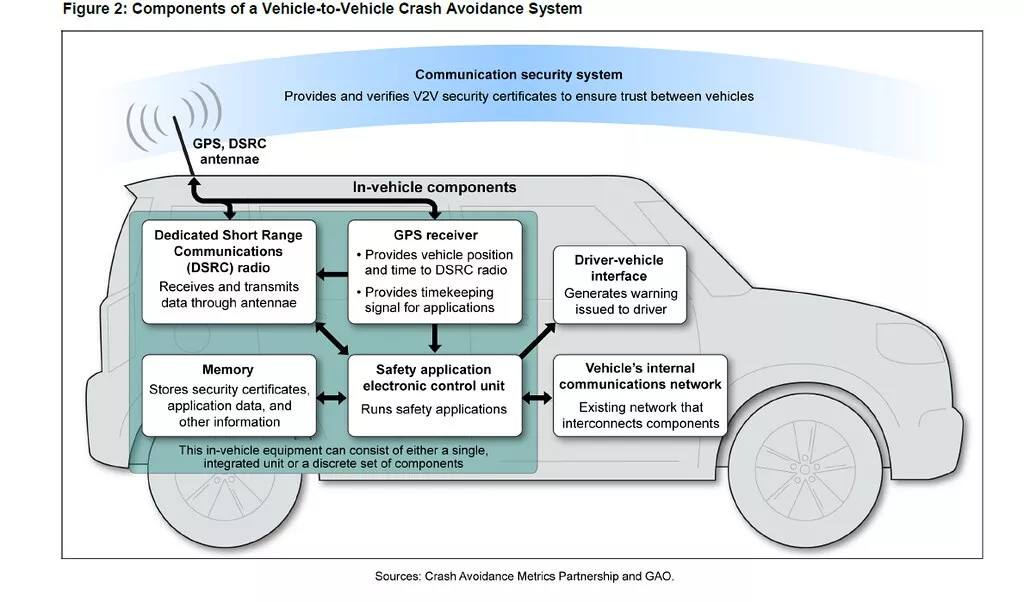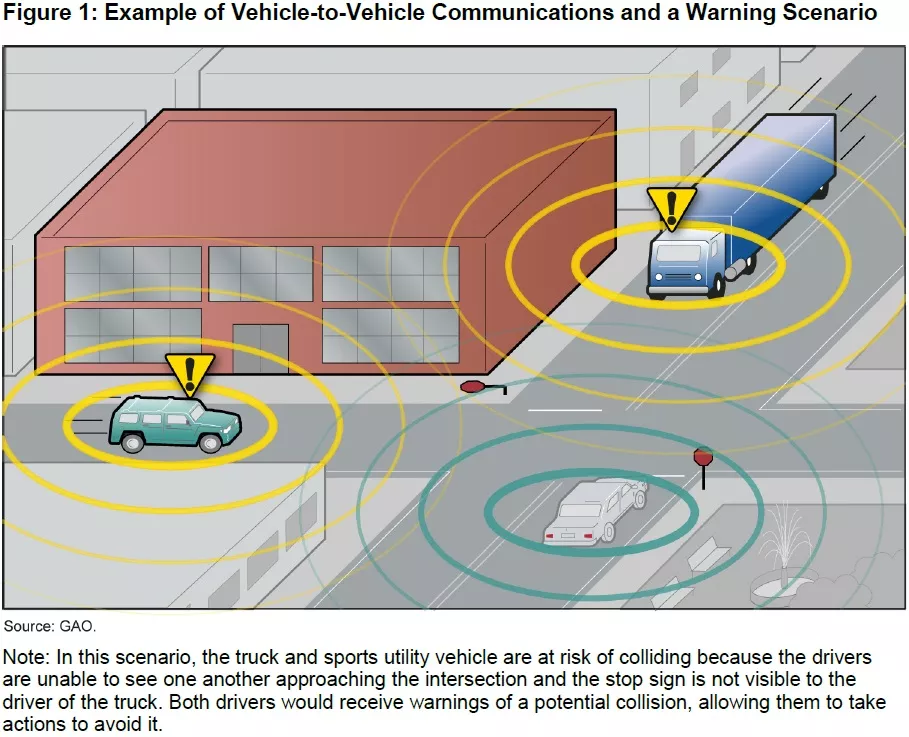Vehicle-to-Vehicle Technologies—the Future of Road Safety?
Every year in the United States, vehicle accidents result in millions of injuries and tens of thousands of deaths. While the number of fatalities has generally decreased over time—in part due to safety improvements such as seat belts—advanced technologies currently being developed could reduce the number even further. For National Safety Month, we share our exploration of vehicle-to-vehicle technologies (V2Vs).
Imagine if your car could see around corners
V2Vs consist of GPS and other components within a vehicle, as well as an external communication system, as shown below. Vehicles equipped with V2Vs would wirelessly share speed, location, and other data with other nearby vehicles also equipped with V2Vs. V2Vs analyze that shared data and warn drivers of potential collisions by flashing lights or otherwise getting drivers’ attention.
Image

(Excerpted from GAO-14-13)
Existing technologies such as cameras and radar can alert drivers to some potential collisions. However, V2Vs are able to alert drivers to types of collisions in which drivers or existing technologies may not be able to “see” another vehicle. For example, V2Vs can alert drivers to potential crash scenarios such as an approaching vehicle around a corner, as shown in the figure below.
Image

(Excerpted from GAO-14-13)
The end of traffic accidents? Not so fast
As we reported, according to the U.S. Department of Transportation (DOT), V2Vs have the potential to address 76% of all multi-vehicle crashes involving at least one passenger vehicle.
However, while V2Vs have great potential, we found a number of challenges to realizing their projected safety benefits. For example:
- Nearly all vehicles on the road would need V2V technologies to achieve significant safety benefits;
- Drivers must still respond to the V2V warnings. If drivers are, for example, distracted, V2Vs may be less effective;
- The costs of equipping vehicles with V2Vs are unknown. While many experts we met with said that the costs of equipping vehicles with V2Vs are not likely to be significant, the costs of a system needed to ensure the security of the data transmitted between vehicles could be; and
- Overcoming potential privacy concerns of drivers and the public in a system that involves sharing data among vehicles could hamper development and adoption.
DOT is working closely with automobile manufacturers and others to address these and other challenges and move toward the deployment of V2Vs in new vehicles.
Check out this video, showing these technologies in action:
- Questions about the content of this post? Contact David Wise at wised@gao.gov.
- Comments on the WatchBlog? Contact blog@gao.gov.

GAO's mission is to provide Congress with fact-based, nonpartisan information that can help improve federal government performance and ensure accountability for the benefit of the American people. GAO launched its WatchBlog in January, 2014, as part of its continuing effort to reach its audiences—Congress and the American people—where they are currently looking for information.
The blog format allows GAO to provide a little more context about its work than it can offer on its other social media platforms. Posts will tie GAO work to current events and the news; show how GAO’s work is affecting agencies or legislation; highlight reports, testimonies, and issue areas where GAO does work; and provide information about GAO itself, among other things.
Please send any feedback on GAO's WatchBlog to blog@gao.gov.
